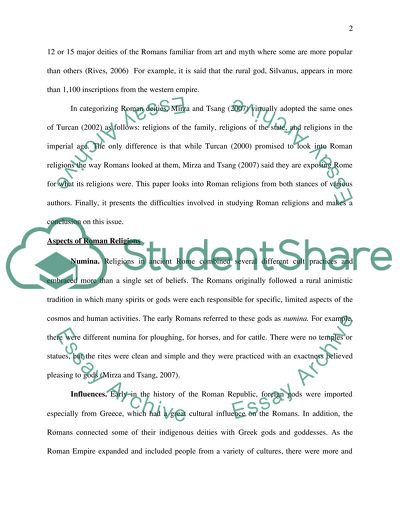Rome's Religious History Essay Example | Topics and Well Written Essays - 3000 words. Retrieved from https://studentshare.org/miscellaneous/1532405-romes-religious-history
Rome'S Religious History Essay Example | Topics and Well Written Essays - 3000 Words. https://studentshare.org/miscellaneous/1532405-romes-religious-history.


